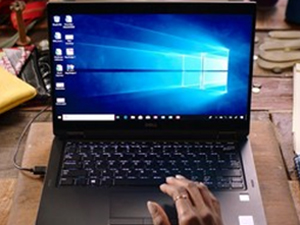



Date:05/10/18
 Windows 10 is now on 700 million devices, according to executives speaking at the Ignite conference. Windows 10 has been the fastest-growing version of Windows, hitting 700 million in about three years on the market, but this nonetheless represents a big shortfall from Microsoft’s original ambitions for the operating system.
Windows 10 is now on 700 million devices, according to executives speaking at the Ignite conference. Windows 10 has been the fastest-growing version of Windows, hitting 700 million in about three years on the market, but this nonetheless represents a big shortfall from Microsoft’s original ambitions for the operating system.
At its launch, the company said that it hoped to have one billion Windows 10 users within two to three years of release. At the time, the Windows 10 strategy covered not only desktop systems (and a number of Windows 10 variants, such as those used on HoloLens, Surface Hub, and Xbox), but also smartphones, with handsets expected to contribute hundreds of millions of users. With the abandonment of the smartphone market, Microsoft acknowledged that it wouldn’t hit the user target on the original timeline.
The importance of that number was part of Microsoft’s sales pitch to developers: the large potential market was intended to motivate developers to develop UWP applications that could run on desktops, tablets, phones, and Xboxes. While UWP still has benefits (for developers it provides an easier to use, more modern framework; for end-users, it gives easier and safer installation and updating), the reduced market reach and omission of the smartphone form factor has arguably diminished its appeal.
The company said it had reached 500 million users at its Build conference last year, increasing that to 600 million six months later in November. This new total of 700 million has been in the cards for some time, with the company saying that it was close to that many users back in May as part of the announcement of Terry Myerson’s departure.
Net Marketshare estimates that Windows 10 is on about 43 percent of Windows machines to 45 percent using Windows 7; StatCounter puts the proportions at 48 percent Windows 10 and 39 percent Windows 7. This migration should start to pick up as Windows 7 approaches its end of support in 2020.
Windows 10 is now installed on over 700 million devices worldwide
 Windows 10 is now on 700 million devices, according to executives speaking at the Ignite conference. Windows 10 has been the fastest-growing version of Windows, hitting 700 million in about three years on the market, but this nonetheless represents a big shortfall from Microsoft’s original ambitions for the operating system.
Windows 10 is now on 700 million devices, according to executives speaking at the Ignite conference. Windows 10 has been the fastest-growing version of Windows, hitting 700 million in about three years on the market, but this nonetheless represents a big shortfall from Microsoft’s original ambitions for the operating system.At its launch, the company said that it hoped to have one billion Windows 10 users within two to three years of release. At the time, the Windows 10 strategy covered not only desktop systems (and a number of Windows 10 variants, such as those used on HoloLens, Surface Hub, and Xbox), but also smartphones, with handsets expected to contribute hundreds of millions of users. With the abandonment of the smartphone market, Microsoft acknowledged that it wouldn’t hit the user target on the original timeline.
The importance of that number was part of Microsoft’s sales pitch to developers: the large potential market was intended to motivate developers to develop UWP applications that could run on desktops, tablets, phones, and Xboxes. While UWP still has benefits (for developers it provides an easier to use, more modern framework; for end-users, it gives easier and safer installation and updating), the reduced market reach and omission of the smartphone form factor has arguably diminished its appeal.
The company said it had reached 500 million users at its Build conference last year, increasing that to 600 million six months later in November. This new total of 700 million has been in the cards for some time, with the company saying that it was close to that many users back in May as part of the announcement of Terry Myerson’s departure.
Net Marketshare estimates that Windows 10 is on about 43 percent of Windows machines to 45 percent using Windows 7; StatCounter puts the proportions at 48 percent Windows 10 and 39 percent Windows 7. This migration should start to pick up as Windows 7 approaches its end of support in 2020.
Views: 383
©ictnews.az. All rights reserved.Similar news
- Azerbaijani project to monitor disease via mobile phones
- Innovative educational system to be improved under presidential decree
- NTRC prolongs license of two TV and radio organizations for 6 years
- Azerbaijan establishes e-registry for medicines
- Azerbaijani museum introduces e-guide
- Nar Mobile opens “Nar Dunyasi” sales and service center in Siyazan city
- International conference on custom electronic services held in Baku
- OIC secretary general to attend COMSTECH meeting in Baku
- Azerbaijan develops earthquake warning system
- New law to regulate transition to digital broadcasting in Azerbaijan
- Azerbaijani State Social Protection Fund introduces electronic digital signature
- Intellectual traffic management system in Baku to be commissioned in December
- Tax Ministry of Azerbaijan started receiving video-addresses
- World Bank recommends Azerbaijan to speed up e-service introduction in real estate
- Azerbaijan to shift to electronic registration of real estate





















